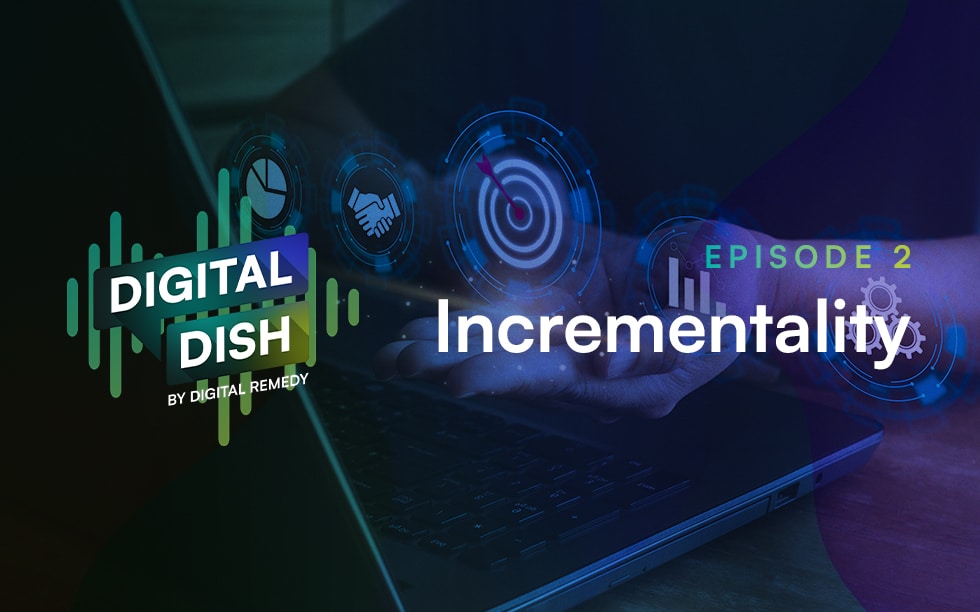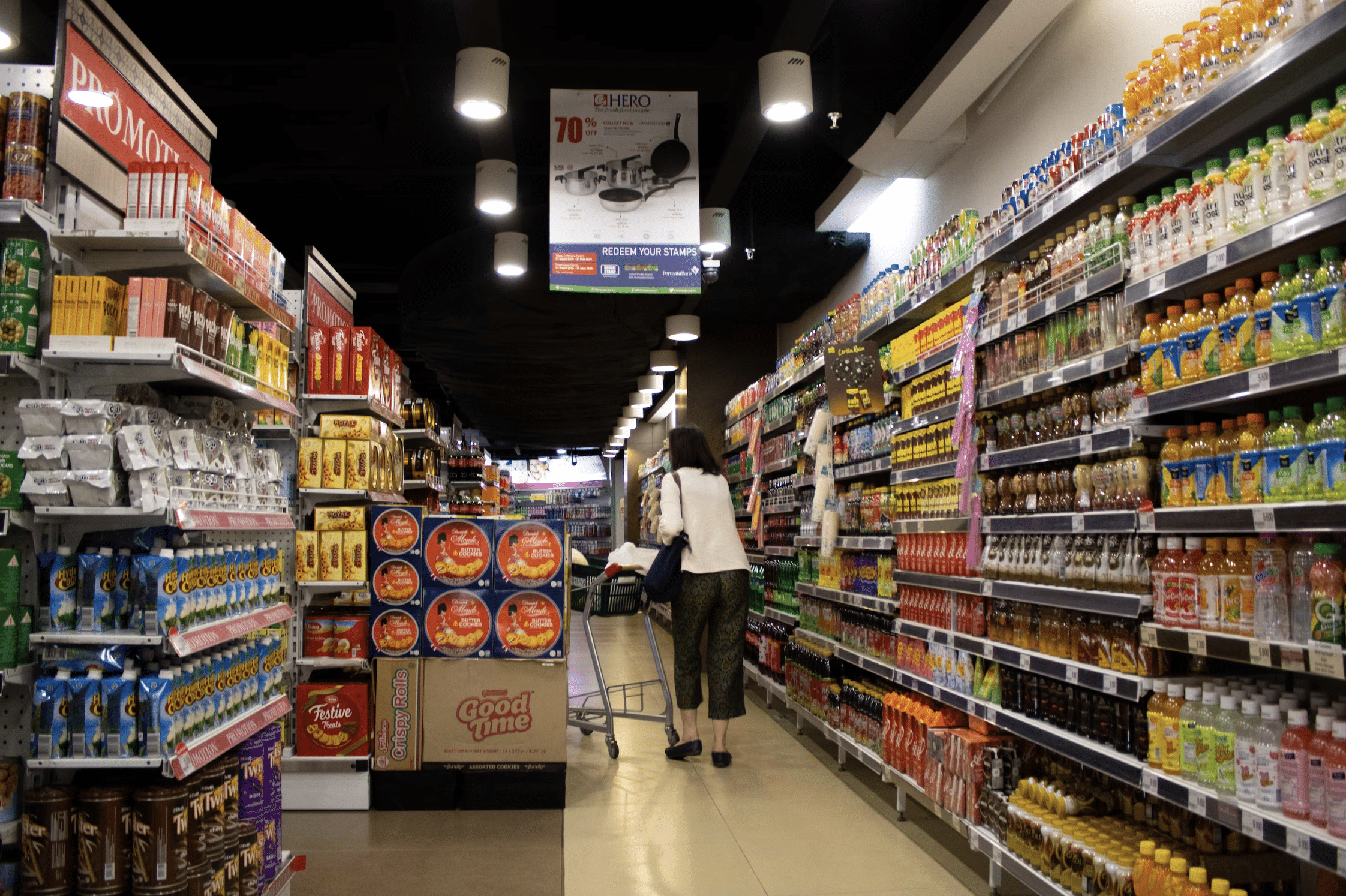Jan 26, 2023
Welcome to the second episode of The Digital Dish, where we dish on all things ad tech. This episode focuses on Incrementality, including an overview of what it is, what the industry challenges are, and what solutions advertisers and agencies can tap into when utilizing incrementality methodology. Prefer to read? Here’s the transcript: [00:00:10] Gabby Turyan, Director of…

Welcome to the second episode of The Digital Dish, where we dish on all things ad tech. This episode focuses on Incrementality, including an overview of what it is, what the industry challenges are, and what solutions advertisers and agencies can tap into when utilizing incrementality methodology.
Prefer to read? Here’s the transcript:
Incrementality addresses two major concerns, especially when you’re trying to assess a single, possible experimental media type. Native demand for products/site visits/leads etc., and all the other media, especially walled-garden media. With proper incrementality testing, we can factor both out entirely, getting right to the heart of the media type we’re analyzing to assess a true, bottom-line impact.

In its simplest form, incrementality is the percentage of total conversions that otherwise would not have happened. When we measure incremental lift: that involves what percent more likely someone who is exposed to a campaign is to convert than someone who is not exposed to a campaign.
We now live in a world where measurement is growing more and more important, and we start to bootstrap spending and really assess where and how marketing dollars are impacting our bottom line. And Incrementality answers questions like:
In this video, we’ll look at:
What we’ve seen in the industry is that traditional marketing performance metrics have been around for many years and marketers still rely on them. Traditional marketing metrics such as CPA, CTR, and VCR, while important, can leave room for additional questions requiring custom analytics to answer. With limited media budgets and advertisers now experimenting with different channels and formats, understanding the true impact of your marketing is crucial in making budgeting decisions and being able to justify scale. Most marketers would (understandably) only want to spend money on channels that drive those bottom-line results and ensure a positive brand experience.

Marketers are facing a looming cookieless future, evolving privacy regulations, fragmented customer data, and the accelerating complexities of identity management. They’re seeking an alternative approach to evaluating the effectiveness of their campaigns. In response to new privacy rules requiring mobile apps to get things like explicit user consent and access to an IDFA device. eMarketer states that 64% of marketing executives plan to invest more in other measurement solutions like incrementality and media mix modeling. When implemented correctly, incrementality can boost a brand’s revenue and help marketers prove their value.
An increasing share of the industry is looking to move away from last-touch attribution. The majority of marketers really do still depend on it because of its ease of use. While last-touch is a simple way to assign credit, it’s not the most accurate. Incrementality is really there to identify the causal event of a conversion, and it’s allowing businesses to properly allocate their budget and reduce wasted ad spend.
Based on the conversations I’ve had, it’s pretty critical for advertisers to understand how their digital marketing efforts are impacting their sales. Incrementality offers deeper insights and more accuracy when measuring metrics like attribution, lift, and return on investment. Incrementality done correctly, and in comparison to the other methodologies, it’s reinforcing the need for marketers to have the right tools in place to drive a brand’s growth and their marketing efforts forward.
The industry challenge for many different advertisers is to make the most out of their dollars. And that means maximizing their media budgets. Advertisers are always experimenting with different channels and formats, and they want to understand the true impact of their efforts. This is really crucial in making budgeting decisions, as well as justifying scale.

In today’s ad landscape, brands run across many different media channels—this can be from paid search to CTV, display, and direct mail, and customers are often exposed to several different media types—as well as several different ads within each media type—before making a purchase or whatever their conversion point might be. And so, therein lies the challenge: How do marketers know which specific ads, or which specific campaigns actually drove the conversion, when so many other campaigns and ads are running concurrently? And how do they separate an individual channel from the rest, or from their own organic or native demand? This is where incrementality comes into play.
One of the examples that I’m about to share will allow you to understand that incremental lift can be measured across numerous variables:
Our team was working with a very well-known QSR advertiser. One of the ways that we wanted to involve incrementality was through the measurement of their creative and publisher lists. We wanted to look at these two pieces and provide them with insights they would not have been able to derive on their own. When we launched incrementality with this QSR advertiser, we could get really granular and look at these different variables. We were able to see which publishers were showing the highest incremental lift as well as which creatives were driving the highest incremental lift, and then also which ones weren’t.
From there, looking at this data, we were able to make optimizations toward these findings. And not only that, but we were able to provide the client with more insights to enable them to make informed decisions around their creative strategy, and this client actually ran a handful of different creative messaging throughout the campaign. Incrementality allowed us to show them which creative messaging drove the highest incremental lift in 2022. And from those results, they’re actually currently shooting to provide us with additional videos that align with this same messaging so that we can have more variety within this creative batch, and then additionally, on the publisher side, we really saw that sports inventory was a top performer for them, so we’re keeping that in mind as we go into 2023 and really maximizing the inventory that is sports related for their 2023 campaign. That’s just one real-life example of how incrementality is allowing us to see the lift across these different variables and find those points of success and then make pushes in those specific areas for continued improvement.
When discussing incrementality, we’re talking about measuring conversions that otherwise would not have happened. The reason why this is important is because we wanna make sure that any conversions that we’re driving with our OTT or our CTV spend are actually driving conversions that are not duplicative with the marketer’s other channels.

Marketers are running search and social and maybe affiliate marketing, and those are doing a great job driving conversions. And there’s a middle of that diagram with the conversions that we will also drive. The way that we do this is we set up a test and what we want to do is we want to analyze the difference in behaviors between two groups.
The first group is an exposed group, that’s people who have seen the campaign that we’re running for a client. The second group is a control group, and these are people who are actively prohibited from seeing an advertisement from this campaign.
And what we’re doing is we’re measuring the lift of that exposed group over that control group, or we’re seeing how those ads impact the behaviors of the people who actually saw them. We do this by looking at conversion rates between the two groups. And the reason we look at conversion rates and not just the number of conversions is that the group size is different.

And the way that we actually create that holdout group is through a process called ghost bidding. What Ghost bidding is, is if you imagine we’re set to serve five ads to individuals, all the targeting that’s applied, goes, behaviors, devices, all of that targeting is applied.
And then, instead of serving one of those five ads, we actually end up holding that person who is eligible for that ad out of the campaign. In other words, four ads get served, one ad gets held out. And then we’re creating a holdout group that mimics the exposed group exactly from a behavioral-, from a targeting-, from a demographic perspective.
All of the targeting that is applied to the exposed group is also applied to the control group because those individuals are actually eligible for bits. There’s no skew this way. So we avoid any skew that would’ve happened with a random sample. And instead, we’re making sure the two groups look exactly alike.
And then the second benefit is, because we’re not actually serving the ad, we don’t have to pay for the impression. So we can run this analysis free of charge. After we, have created that holdout group, what we’re able to do is measure the conversion rate lift of the exposed group over that holdout group.
And not only can we do this at the overall level, we can do this below the aggregate, which means that we can measure which publishers, which creatives, which times of day, which audiences are over-indexing or or have a higher incremental lift, than other times of day or other audiences or, other creatives or publishers, whatever that variable set might be.
Because we’re able to get below the aggregate, we can actually apply this analysis into the way that we optimize. So as opposed to just optimizing toward a standard ROAS goal or a standard CPA goal, we’re able to actually optimize toward an incremental CPA or an incremental ROAS. Adding another touchpoint and making sure that the creatives and the publishers and the day parts and the audiences that we’re targeting and ultimately moving money toward are actually driving bottom-line results, not just an in-platform low CPA reporting result.
This is all part of an effort to unsilo OTT. We wanna make sure that whatever we’re doing for our clients is actually in the best benefit from a bottom-line perspective, not just that we’re looking good from a reporting perspective in-platform.
Interested in learning more? Check out our Intro to Incrementality series or our Trends & Insights report—or speak to a team member! Be sure to follow Digital Remedy on LinkedIn, Twitter, and Instagram for the latest updates.
Related Posts

In today’s ever-evolving digital landscape, effective marketing strategies demand innovation and precision. YouTube TV advertising has emerged as a.

The consumer packaged goods (CPG) industry is elbowing through a tight market. Between pressing supply chain challenges, shifting shopper.

The age-old maxim of “think globally, act locally” isn’t just embraced by marketers for local mom-and-pop businesses. Today, massive.